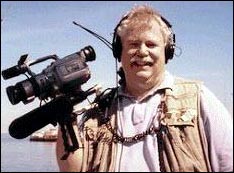It was the best of times, it was the worst of times, it was the age of wisdom, it was the age of foolishness, it was the epoch of belief, it was the epoch of incredulity, it was the season of Light, it was the season of Darkness, it was the spring of hope, it was the winter of despair . . . A Tale of Two Cities, 1859 Charles Dickens wrote those words one-hundred forty-two years ago. For better, for worse, they seem as relevant now as they did then, relevant throughout the fabric of our lives. As horrible as the events of September 11th were, as awful as life has seemed since, to photojournalists this has been one of the best of times. Some great work, still and motion, has emerged from the dust and rubble of lower Manhattan and the barren plains of Afghanistan. Well deserved kudos for the imagery have poured in from many quarters. We've done ourselves proud. And it's been the worst of times, to those affected by the new economic reality. Others write eloquently in the DJ about the chilling effect on still photography, really a continuum of bad news that has plagued the business for many months. Unlike still photographers, video journalists rarely own the images they shoot. Almost all freelancers accept assignments on a "work for hire" basis. The battle over rights is a non-starter. But that doesn't mean there are no struggles. In the past three months, television news has provided splendid coverage, harkening back to the 1980's, the glorious "golden age." But the winter of despair approaches, for all that stunning work comes at a high price. Quality+quantity is expensive. Couple those costs with the total loss of advertising revenues for a week in September, and you court disaster. I don't mean to suggest the media giants are in danger of vanishing, they are far too big and too diversified for that. But the broadcast divisions are hurting, and their news departments are hemorrhaging. The piper will soon have to be paid. And the payment will come in further reductions of staff, culling weak programs, a slowing of enterprise reporting, and a growing reliance on out-sourced and pool news coverage. This litany may sound familiar (see September's column). But there have been new developments. CBS News recently announced it was laying off staff at 60 Minutes. In the past, 60 was untouchable, mostly immune to the Darkness. Now, despite it's (usually) top ten ratings, the show's budget, and its people, have become targets. Already, the use of freelancers has been curtailed. These cuts are not likely to affect the quality of the show. Not yet. We'll have to see what sort of "Hewitt and cry" there is when the second round is imposed. There has been renewed interest in merging network news operations. Why have two bureaus in Dallas when one will do nicely? Why have sixteen hundred people covering the news, when eight hundred, or six hundred, maybe even four hundred, can do the same job? Producers and correspondents are already shooting their own material. Maybe interns and janitors can too. And Dirck has reminded me that the collapse of the Word Trade Centers took with it the transmitters and transmission towers of many New York radio and television stations. In some cases, their signal coverage area has dropped by fifteen to twenty percent. Less signal strength means fewer viewers. Fewer viewers means lower advertising rates. Lower advertising rates lead to reduced profits. And reduced profits means a squeeze on expenses, like local news coverage. Efforts to build a new super-tower have stalled because of the NIMBY (Not In My Backyard) syndrome, so the long term prospects for increased revenues in that market are dim. September 11 suddenly brought two competing dogmas face-to-face, the need to cover the news, and the need to increase profits. That the former has so far won over the latter is heartening, though probably only temporary. What I find endlessly curious about this whole issue is this: despite all the political and economic sturm und drang, photojournalism is thriving in this first year of the third millennium. Our images grace posters, billboards, advertisements, and commercials. Magnum photographers have garnered much praise, and considerable ink, for their new book about the tragedy. A show of 9/11 photographs and videos is packing them in in New York. Even the exalted New York Times has been promoting a photographer's-eye view of the ground war in Afghanistan (in pictures and words). Is this the season of Light, the spring of hope? Probably not, but let's enjoy it while we can. ©
2001 Steven Trent Smith |
|
|
Write a Letter
to the Editor |
